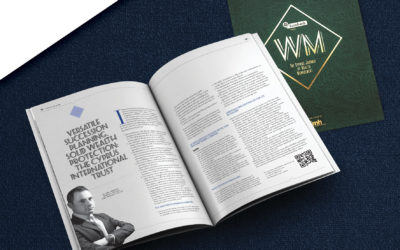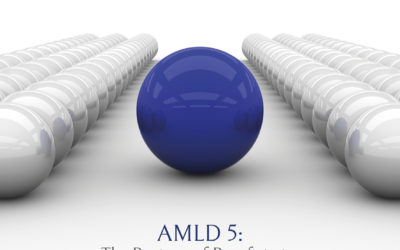
Technical Information & Background
In line with OECD’s project to combat Base Erosion and Profit Shifting (“BEPS”), the EU, with the latest amendment to DAC6 25 May 2018, acting through the Economic and Financial Affairs Council formally adopted the Council directive amending Directive 2011/16/EU on administrative cooperation as regards mandatory automatic exchange of information in the field of taxation in relation to reportable cross-border arrangements (“RCBA/s”) in order that potentially aggressive tax planning arrangements are disclosed. DAC6 was published in the Official Journal (“OJ”) of the European Union 5 June 2018. DAC6 entered into force on the twentieth day following the date of its publication in the OJ, which was 25 June 2018.
The purported purpose of DAC6 is to expand on the Common Reporting Standards (“CRS”) and strengthen tax transparency as well as fight against aggressive tax planning through mandatory disclosure of cross-border arrangements by intermediaries, or individual or corporate taxpayers, to the tax authorities and allows automatic exchange of such information among EU Member States.
However, the term “aggressive tax planning” is not defined and instead reference is made to a number of pre-determined “hallmarks”, which are features that could render a cross-border arrangement reportable under DAC6. The hallmarks are broadly scoped and represent certain typical characteristics and elements of transactions that may present an indication of tax avoidance or abuse of direct taxes. The said transactions may also include arrangements that are tax-motivated, but additionally, ordinary transactions that are not driven by tax planning motives. Consequently, arrangements may also need to be reported to the competent local tax authorities in situations where no tax advantage is obtained.
Disclosure Requirements under DAC6
Since the obligation for reporting falls on professional intermediaries, it is imperative to know which intermediaries fall within the scope of DAC6. In this respect, an “intermediary” is anyone who:
“…designs, markets, organises or makes available for implementation or manages the implementation of an RCBA, provides, directly or by means of other persons, aid, assistance or advice with respect to designing, marketing, organising, making available for implementation or managing the implementation of an RCBA…”
As a result, the reporting obligation falls on accountants, auditors, legal advisors, tax advisors, administrative / fiduciary service providers, or any other professionals who undertake any of the above acts, noting that, under certain conditions, the reporting obligation may fall on the relevant taxpayers, i.e., in case where there are no intermediaries involved or a non-EU intermediary is involved. Usually this may occur if RCBAs are planned and executed in-house or in case an intermediary is not obliged to disclose any information subject to the legal professional privilege.
Definition of an RCBA
An RCBA generally refers to an arrangement or series of arrangements concerning either more than one Member State, or a Member State and a third country. (At least one participant must be located within the EU).
“Hallmarks” under DAC6
As provided in the directive, the categorisation of an arrangement as reportable is connected to whether such an arrangement falls under any of the following indicators of presumed aggressive tax avoidance known as “hallmarks”. Hallmarks are sub-divided into five categories:
Generic Hallmarks – Category A: arrangements where a relevant taxpayer or a participant in the arrangement undertakes to comply with a condition of confidentiality in order not to disclose how such an arrangement could secure a tax advantage vis-a-vis other intermediaries or the tax authorities, or which may give rise to performance/success fees or mass-marketed schemes.
Specific Hallmarks – Category B: such arrangements include the acquisition of loss- making companies (as a means of reducing tax liabilities), conversion of income into lower-taxed revenue schemes and circular transactions / round-tripping of funds.
Specific Hallmarks – Category C: arrangements relating to cross-border payments between associated companies where the recipient of such a payment is not subject to tax, subject to zero or almost zero tax, or subject to a full tax exemption or a preferential tax regime; this hallmark also includes payments to associated stateless enterprises or associated enterprises located in EU blacklisted jurisdictions, multiple deductions of depreciation on the same assets, double reliefs under the relevant double tax treaties, or mismatches in relation to transfer pricing provisions.
Specific Hallmarks – Category D: arrangements that have the effect of undermining the Common Reporting Standard or the rules on identification of beneficial ownership (non-transparent legal or beneficial ownership chains).
Specific Hallmarks – Category E: arrangements related to transfer pricing and the misuse of unilateral safe harbour rules. Certain hallmarks will only be triggered if a “Main Benefit Test” is satisfied. This test can only be satisfied if it can be established that the main benefit or one of the main benefits of a certain transaction is the obtaining of a tax advantage.
Multiple Intermediaries
If multiple intermediaries are involved for the implementation of an RCBA or a series of RCBAs, then co-ordination between all intermediaries will be essential to avoid multiple reports on the same arrangement.
Penalties
The law transposing the DAC6 Directive into national legislation imposes penalties of up to EUR20,000, per reportable transaction for: failing to report, delayed reporting, incomplete or misleading reporting, failure to notify other intermediaries.
Reporting Timelines: Cyprus
Information on reportable cross-border arrangements has to be filed with the Tax Department.
In respect to reportable cross-border arrangements, whose first step was implemented during the transition period, i.e., between 25 June 2018 (the date of entry into force of DAC6) and 1 October 2020 (the date of application of DAC6), information is required to be filed with the national tax authorities by 30 November 2020.
In respect of future transactions, information is to be filed within 30 days of the earliest of the following dates.
• the day after the arrangement is made available for implementation;
• the day after the arrangement is ready for implementation;
• when the first step is implemented.
Reporting Obligations
The primary reporting obligation lays with the intermediaries, i.e., any person that “designs, markets, organises or makes available for implementation or manages the implementation of an RCBA”.
Post COVID-19 Developments
The Council of the European Union 24 June 2020 announced that Member States shall be given the option of “deferral” in respect to rules on cross-border information reporting. Following the approval of the European Parliament 19 June 2020, the Council announced that it has adopted an amendment to DAC6, allowing EU Member States an option to defer the time limits for the filing and exchange of information with respect to mandatory disclosure requirements for intermediaries and relevant taxpayers under DAC6.
The EU Council’s announcement notes that the optional deferral is in response to the severe disruption to the activities of many financial institutions, tax advisers and tax authorities caused by the Covid-19 pandemic and lockdown measures. The amendment provides the possibility for the Council to extend the deferral period once, for a maximum of three further months. Any extension would depend on the evolution of the pandemic and would be subject to strict conditions.
Amendments to the reporting deadlines
The amendments, as adopted, give EU Member States the option to delay the deadlines for filing information on reportable cross-border arrangements by up to six months, as follows:
1 January 2021: 30-day period for reporting cross-border arrangements commences
The beginning of the 30-day period for reporting cross-border arrangements, will likely be extended from 1 July 2020 to 1 January 2021.
28 February 2021: Reporting of historical cross-border arrangements
The deadline for the reporting of historical arrangements – implemented between 25 June 2018 and 30 June 2020 will likely be extended from 31 August 2020 to 28 February 2021.
30 April 2021: Marketable arrangements
The new deadline for the first periodic report on marketable arrangements, will likely be 30 April 2021.
30 April 2021: First exchange of information
The first exchange of information on reportable cross-border arrangements between EU tax authorities, will likely take place 30 April 2021, instead of 31 October 2020.
Cyprus
It is expected that Cyprus will opt to amend its draft legislation and postpone the initially stipulated deadlines by six months, based on the above deadlines. DAC6 will affect Cypriot companies or Cypriot permanent establishments of foreign companies with cross-border transactions, regardless of the postponement of the reporting deadlines. Given the large penalties, even where it is determined that no transactions are reportable, this should still be documented accordingly, to maintain an audit trail.
We are monitoring developments on the application of DAC6 and updates will appear on our website and social media channels.





